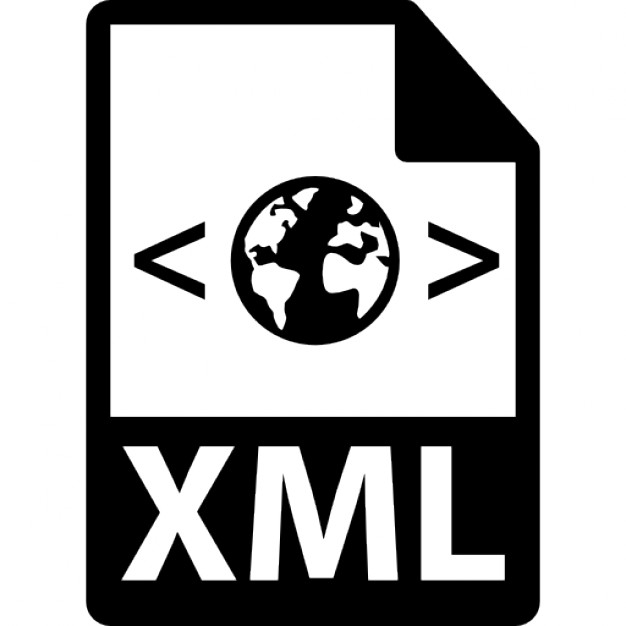Recommended 5 articles about actual combat bags
Motivation: I first thought of making a binary tree because I needed to make a company structure chart. The previous approach was to draw a picture directly using graphics software. It looks great, but you need to paint a new one every time there are changes. On the other hand, the display and layout of the lines on the webpage are quite limited. The dynamic generated data is very difficult to layout and positioning, and it is also unsatisfactory in beauty. After making various attempts, I decided to use XML+XSL as data operations; use VML to beautify the lines and use JavaScript to locate the object. Material: The structure of the XML volume has 2 files: Flow2.xml and Flow2.xsl Effect: Browse here Explanation: Sort tree idea (1) & lt; html xmlns: v = "urn: schemas-microsoft-COM: vml" & gt "& gt ; & lt; style & gt; v \:*{behavior: url (#default#vml)} & n
## 1. xml's actual combat number (5): Structural tree map

This profile: I first thought of making a binary tree because I needed a corporate structure. The previous approach was to draw a picture directly using graphics software. It looks great, but you need to paint a new one every time there are changes. On the other hand, the display and layout of the lines on the webpage are quite limited. Typesetting and positioning based on dynamically generated data are very difficult, and the aesthetics are not satisfactory. After making various attempts, I decided to use XML+XSL for data operations; use VML to beautify lines, and use JAVASCRIPT to position objects.
2. XML Volume Practical Tips (4): Menu Linkage

: Now we are doing a small example of applying XML in IE: solve the problem of connectivity of double -drop pull menu. The most common possibility of everyone is the example of changing the city options after selecting the province, so let's try it to complete it with XML.
# 3. XML volume actual combat number (3): dynamic tabs

#: In order to facilitate users to view a large number of data, we will use dynamic paging, so the paging function is the most common and most commonly used functional module we have seen on the website. In the past, information paging was connected to the database, and every click required the support of the background database. This not only increases the burden on the server, but also seriously affects the user's browsing speed.
4. XML Volume Practical Tips (2): Dynamic Query

Introduction: The query function is the most common and commonly used functional module we have seen on the website. In the past, information queries were connected to the database, and every click required the support of the backend database. However, in many cases, users often only operate on a certain part of the data, which not only increases the burden on the server, but also seriously affects the user's browsing speed.
5. Practical Tips for XML Volume (1): Dynamic Sorting

Introduction: The sorting function makes the data on our page appear more humane, which is a very common functional effect we have seen on websites. In the past, automatic sorting was done with a lot of script code, which was difficult for ordinary enthusiasts. However, it is much simpler to deal with it using XML. Make your page more gorgeous, haha, are you excited too?
The above is the detailed content of Recommended 5 articles about actual combat bags. For more information, please follow other related articles on the PHP Chinese website!

Hot AI Tools

Undresser.AI Undress
AI-powered app for creating realistic nude photos

AI Clothes Remover
Online AI tool for removing clothes from photos.

Undress AI Tool
Undress images for free

Clothoff.io
AI clothes remover

AI Hentai Generator
Generate AI Hentai for free.

Hot Article

Hot Tools

Notepad++7.3.1
Easy-to-use and free code editor

SublimeText3 Chinese version
Chinese version, very easy to use

Zend Studio 13.0.1
Powerful PHP integrated development environment

Dreamweaver CS6
Visual web development tools

SublimeText3 Mac version
God-level code editing software (SublimeText3)

Hot Topics
 1378
1378
 52
52
 Is the conversion speed fast when converting XML to PDF on mobile phone?
Apr 02, 2025 pm 10:09 PM
Is the conversion speed fast when converting XML to PDF on mobile phone?
Apr 02, 2025 pm 10:09 PM
The speed of mobile XML to PDF depends on the following factors: the complexity of XML structure. Mobile hardware configuration conversion method (library, algorithm) code quality optimization methods (select efficient libraries, optimize algorithms, cache data, and utilize multi-threading). Overall, there is no absolute answer and it needs to be optimized according to the specific situation.
 How to convert XML files to PDF on your phone?
Apr 02, 2025 pm 10:12 PM
How to convert XML files to PDF on your phone?
Apr 02, 2025 pm 10:12 PM
It is impossible to complete XML to PDF conversion directly on your phone with a single application. It is necessary to use cloud services, which can be achieved through two steps: 1. Convert XML to PDF in the cloud, 2. Access or download the converted PDF file on the mobile phone.
 How to convert XML to PDF on your phone?
Apr 02, 2025 pm 10:18 PM
How to convert XML to PDF on your phone?
Apr 02, 2025 pm 10:18 PM
It is not easy to convert XML to PDF directly on your phone, but it can be achieved with the help of cloud services. It is recommended to use a lightweight mobile app to upload XML files and receive generated PDFs, and convert them with cloud APIs. Cloud APIs use serverless computing services, and choosing the right platform is crucial. Complexity, error handling, security, and optimization strategies need to be considered when handling XML parsing and PDF generation. The entire process requires the front-end app and the back-end API to work together, and it requires some understanding of a variety of technologies.
 How to open web.xml
Apr 03, 2025 am 06:51 AM
How to open web.xml
Apr 03, 2025 am 06:51 AM
To open a web.xml file, you can use the following methods: Use a text editor (such as Notepad or TextEdit) to edit commands using an integrated development environment (such as Eclipse or NetBeans) (Windows: notepad web.xml; Mac/Linux: open -a TextEdit web.xml)
 Recommended XML formatting tool
Apr 02, 2025 pm 09:03 PM
Recommended XML formatting tool
Apr 02, 2025 pm 09:03 PM
XML formatting tools can type code according to rules to improve readability and understanding. When selecting a tool, pay attention to customization capabilities, handling of special circumstances, performance and ease of use. Commonly used tool types include online tools, IDE plug-ins, and command-line tools.
 Is there any mobile app that can convert XML into PDF?
Apr 02, 2025 pm 08:54 PM
Is there any mobile app that can convert XML into PDF?
Apr 02, 2025 pm 08:54 PM
An application that converts XML directly to PDF cannot be found because they are two fundamentally different formats. XML is used to store data, while PDF is used to display documents. To complete the transformation, you can use programming languages and libraries such as Python and ReportLab to parse XML data and generate PDF documents.
 How to open xml format
Apr 02, 2025 pm 09:00 PM
How to open xml format
Apr 02, 2025 pm 09:00 PM
Use most text editors to open XML files; if you need a more intuitive tree display, you can use an XML editor, such as Oxygen XML Editor or XMLSpy; if you process XML data in a program, you need to use a programming language (such as Python) and XML libraries (such as xml.etree.ElementTree) to parse.
 xml online formatting
Apr 02, 2025 pm 10:06 PM
xml online formatting
Apr 02, 2025 pm 10:06 PM
XML Online Format Tools automatically organizes messy XML code into easy-to-read and maintain formats. By parsing the syntax tree of XML and applying formatting rules, these tools optimize the structure of the code, enhancing its maintainability and teamwork efficiency.




